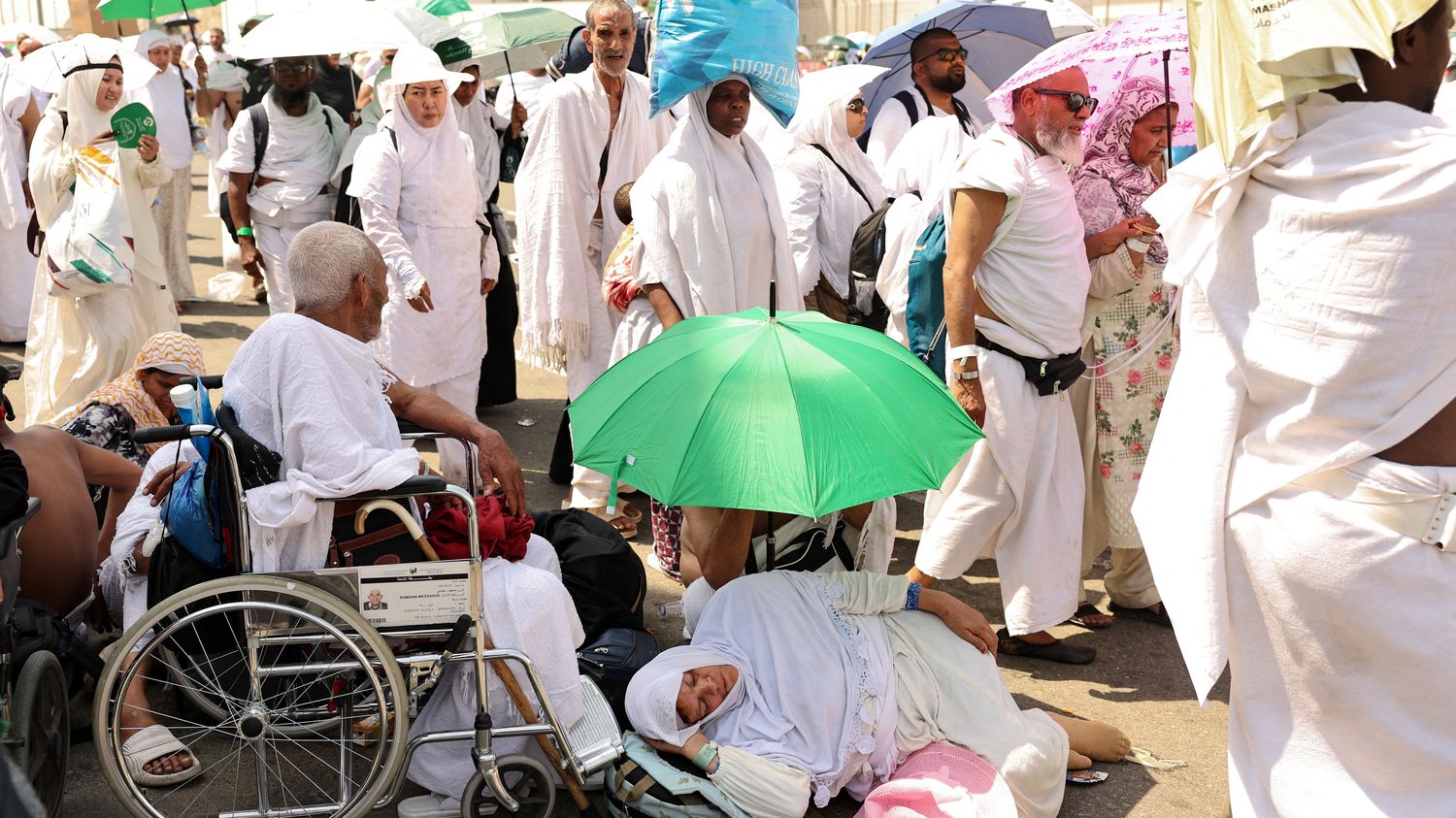Extreme heat during the hajj has killed more than 1,000 people this year. Like climatologist Robert Vautard, scientists predict that in less than a century, climate change could make the pilgrimage impossible in certain years.

Published
Reading time: 4 min

At least more than a thousand people died during the hajj, the great Muslim pilgrimage which took place in Mecca, Saudi Arabia, from Friday June 14 to Wednesday June 19. While this toll is still very provisional, the vast majority of deaths are declared to be heat-related with temperatures reaching up to 51.8 degrees Celsius.
Robert Vautard, climatologist and member of the IPCC, confirms to franceinfo that several scientific studies predict that the pilgrimage to Mecca will increasingly suffer the effects of climate change. The heat stress of pilgrims will exceed the “extreme danger threshold”between 2047 and 2052 and from 2079 to 2086, “with increasing frequency and intensity as the century advances”predicts in particular a study published in 2019 in the journal Geophysical Research Letters.
As a scientist and IPCC expert, are you surprised by this number of heat-related deaths during the pilgrimage this year in Saudi Arabia?
With temperatures rising to 48 degrees or a little more even, I am not at all surprised by the mortality that this creates. The physical conditions are absolutely untenable in this furnace. We are well aware of the effects of heat on mortality, on the fact that we are no longer able to cool our bodies. After a while we are in hyperthermia, that is to say we can no longer cool our own body by evaporation and maintain the temperature at 37 degrees. There are other problems as well, including cardiovascular problems. People who have these problems will be exposed to extreme conditions that can trigger strokes and heart problems.
In 2015, an MIT study warned that by 2100 the effects of global warming could make it impossible to hold the pilgrimage to Mecca. Isn’t this episode confirming that?
In the scenarios that follow the policies currently in place, that is to say scenarios with approximately three degrees of warming, we must expect at least three degrees more, or even up to six degrees of warming. more in heat waves. This leads to temperatures above 50 degrees. Some countries in the Persian Gulf already reach these temperatures, for example Iraq, but when it happens during a pilgrimage, it is terrible. It will not necessarily be every year, all the time, but there will be periods during which it will simply be impossible to carry out the pilgrimages, notably at the end of June, in July or in August.
To protect pilgrims from the heat, Saudi Arabia installs numerous air conditioning systems. Isn’t this a vicious circle?
Oyes, absolutely, but in any case we will need air conditioning for hospitals, for vulnerable people, we must not imagine that this is a solution from which we can escape: it will be necessary. It will take as little as possible, but it will still be necessary so that people can cool off, even in France. Simply, we should not consider that this is the solution to all problems, there are many other things to do such as insulating homes and of course to reduce global warming by reducing greenhouse gas emissions.
For countries like Saudi Arabia, can we still reverse the trend?
Very clearly, global warming will not go back. Conditions are therefore not going to improve and we will have more and more episodes of this type, in Saudi Arabia as elsewhere.
The latest studies assure that the Gulf countries will become “hostile” to humans due to their climatic conditions.
Absolutely. What is also happening around the Gulf is another phenomenon called thermal stress. Around the Gulf, we can have deaths at much lower temperatures, at 35 or 40 degrees which are generally bearable by most of the population in dry conditions.
“When the humidity reaches almost saturation, that is to say almost 100%, we are in the same conditions of not being able to sweat because the outside air is too humid and cannot absorb our perspiration.”
Robert Vautardat franceinfo
However, it is perspiration that lowers the body temperature. This is what often happens during hot spells around the Gulf, because the Persian Gulf is very hot, particularly in summer, the waters are very warm. When water evaporates, it evaporates a lot and saturates the water with moisture. While it is not necessarily 45 or 50 degrees we have this thermal stress which is linked to both heat and humidity. For the event that occurred in Mecca, one may wonder what the degree of humidity was. It is possible that it will be a heat episode with also quite a bit of humidity. What you need to know is that in France, heat waves always kill hundreds of people each time. For example, in 2022, we have had hundreds of deaths like that. In 2019 we also had hundreds, even thousands and thousands of deaths in Europe. Heat waves really are what we call the silent killers of climate change. It doesn’t make for impressive images like floods but there are many people for whom it can be fatal.
